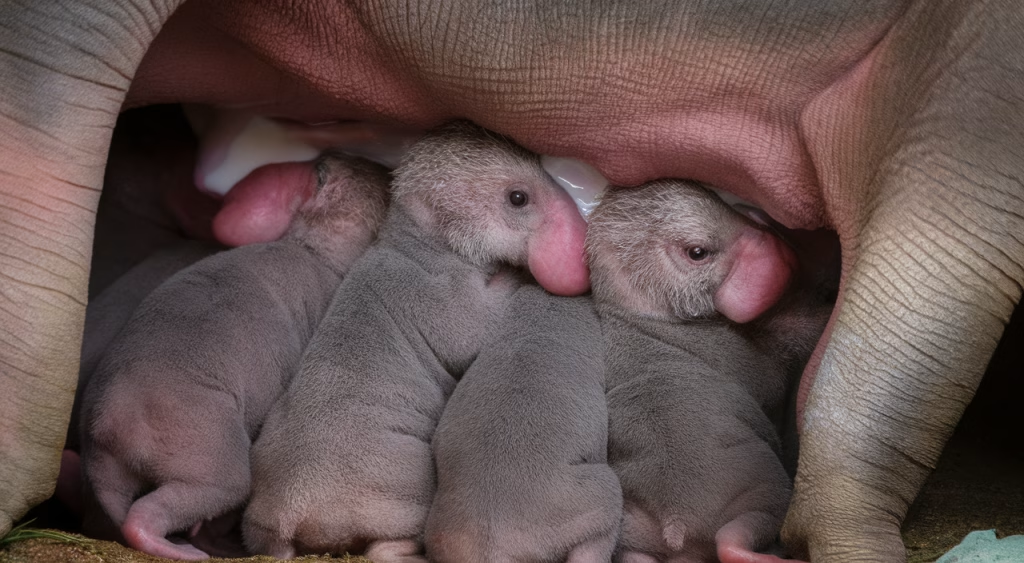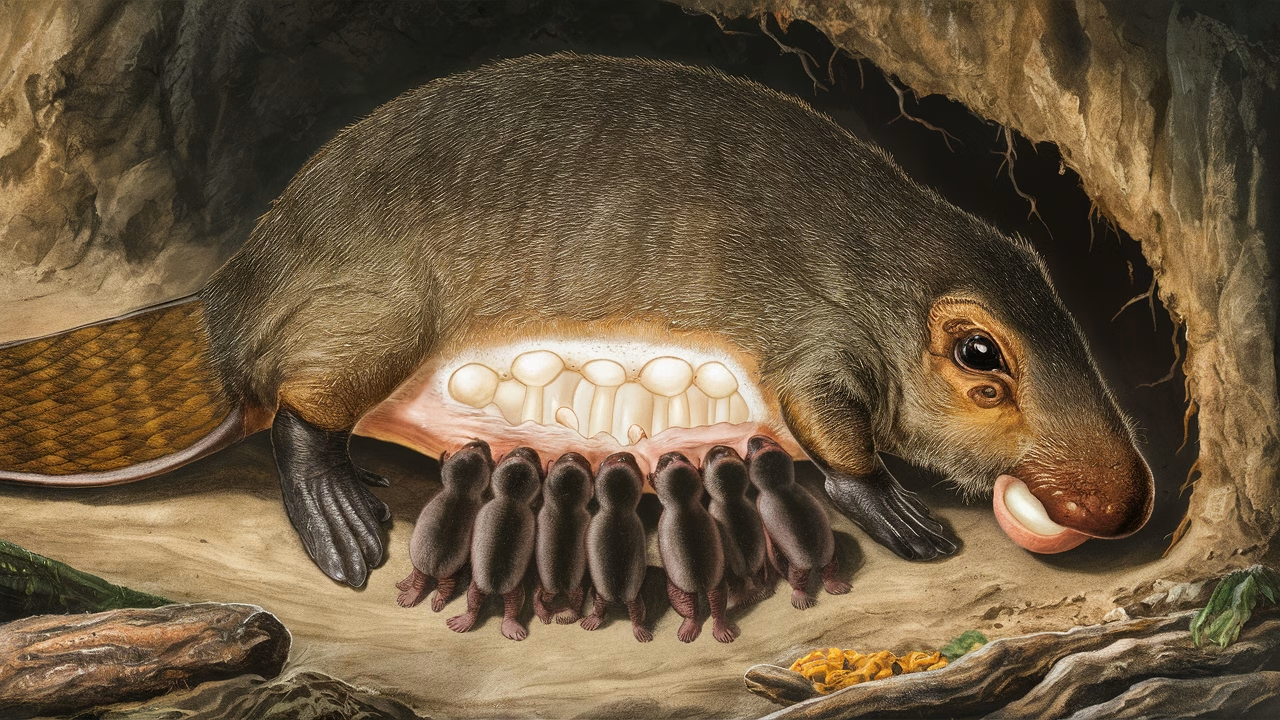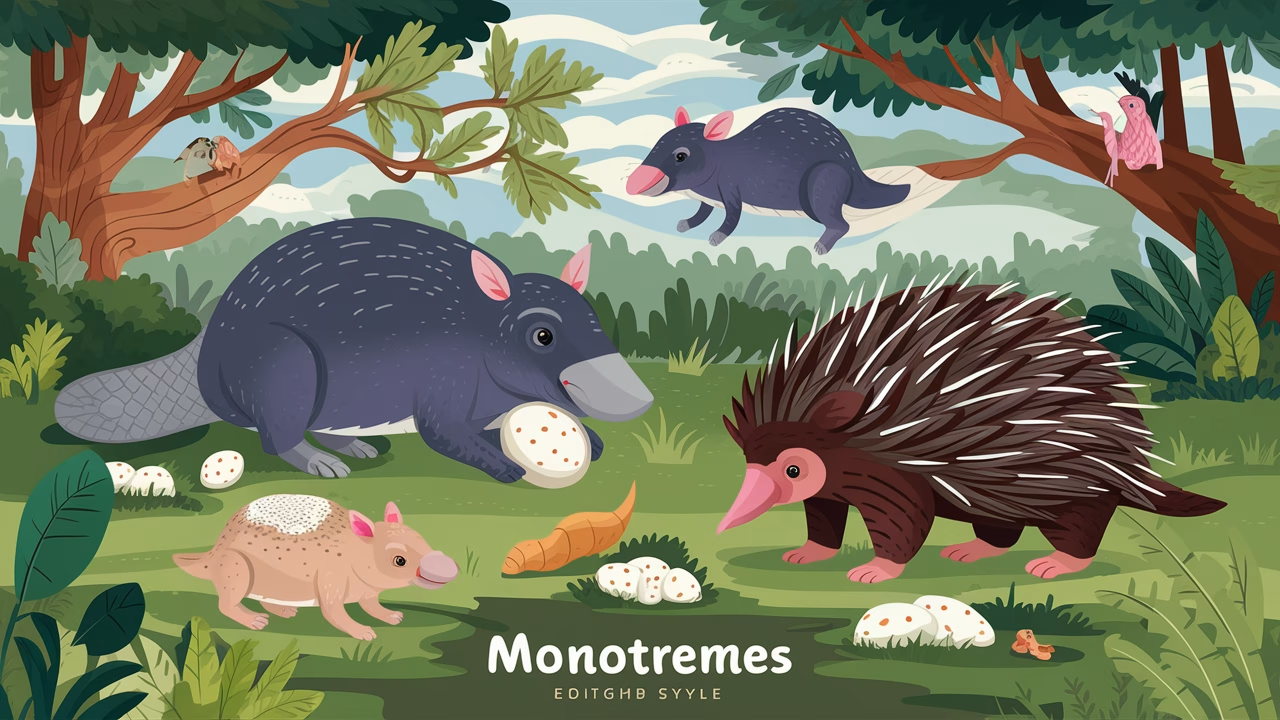How do platypus babies feed without nipples?
Platypus babies feed by lapping up milk secreted through specialized platypus milk pores on their mother’s abdomen. Unlike most mammals, the platypus lacks nipples entirely, instead relying on this primitive yet effective monotreme lactation system for nourishment delivery.
TL;DR: How Platypus Milk Pores Nurture Their Young
- Milk without nipples: Platypuses don’t have teats; their milk oozes through platypus milk pores on their skin.
- Monotreme innovation: This platypus breastfeeding method is unique to egg-laying mammals.
- Evolutionary insight: Platypus milk pores offer clues about the beginnings of mammalian lactation.
- Natural efficiency: Young platypuses lap milk from tufts of fur, absorbing essential nutrients and antibodies.
Unveiling Platypus Milk Pores: A Unique Mammalian Marvel
Imagine this: a mammal that lays eggs, has a duck-like bill, venomous spurs, and no nipples—yet still successfully feeds its young through platypus breastfeeding. That’s the platypus for you. One of the most enigmatic creatures on Earth, the platypus has puzzled biologists ever since its discovery. But perhaps its most fascinating trait? How it nourishes its young through specialized platypus milk pores.
Female platypuses produce rich, antimicrobial milk critical to their offspring’s health. However, they do so without nipples. Instead, milk seeps through specialized platypus milk pores in the skin, collecting in grooves along their abdomen or on tufts of fur. The young then lap it up directly—a behavior that makes monotreme lactation unlike any other mammalian feeding method.
This unique feeding adaptation reveals secrets about early mammalian evolution, taking us back to when nursing behaviors were just developing. Understanding platypus milk pores not only satisfies curiosity but also enhances our grasp of how mammals became what they are today.
The Evolutionary Enigma: Adaptive Advantages of Monotreme Lactation
Understanding Monotremes: The Only Egg-Laying Mammals
Alongside the echidna, the platypus belongs to an exclusive group of egg-laying mammals known as monotremes. These evolutionary marvels possess a unique genetic makeup that bridges the gap between reptiles and placental mammals. Laying eggs instead of birthing live young might sound primitive, but it’s precisely this trait that enables incredible adaptations like platypus milk pores.
Why does monotreme lactation work so well? Because baby platypuses hatch blind, hairless, and fragile, far from self-sufficient. Since they aren’t incubated internally like placental mammals’ offspring, they depend heavily on their mother’s milk delivered through platypus milk pores for both immunity and development.
Comparative Analysis: Platypus Milk Pores vs. Traditional Mammalian Lactation
| Feature | Platypus | Typical Mammals |
|---|---|---|
| Presence of Nipples | None | Yes, with ducts |
| Milk Delivery | Seeped through platypus milk pores | Excreted via teats and suckling |
| Feeding Method | Platypus breastfeeding via lapping from fur grooves | Direct suckling from nipple |
| Innate Immunity Transfer | Milk rich in antimicrobial peptides | Yes, but varies |
In short, while the platypus may lack nipples, it certainly doesn’t lack effective means of nurturing its young. Platypus milk pores might appear primitive, but they’re incredibly well adapted to their ecological niche and represent a fascinating example of monotreme lactation.
The Intricacies of Platypus Parenting: Nurturing Without Teats
After the female platypus lays her leathery eggs in a burrow and incubates them for about 10 days, tiny, undeveloped hatchlings emerge. These babies cling to their mother’s fur, nudging along her abdomen to reach milk-rich fur patches where platypus breastfeeding occurs.
Here’s where the magic of platypus milk pores happens. The mother’s milk-producing glands are scattered beneath her skin, opening externally via specialized platypus milk pores. This means baby platypuses never need to suckle. Instead, they lap milk that beads on her skin through monotreme lactation, nestled between fur-lined grooves on her abdomen.
This platypus breastfeeding method might appear unsophisticated, but it’s incredibly efficient in their underground burrow environment. The fur helps retain warmth and prevents milk evaporation, creating a perfect micro-environment for feeding through platypus milk pores.
Monotreme Marvels: Other Fascinating Adaptations
Monotremes don’t stop at platypus milk pores when it comes to remarkable adaptations. Take the male platypus’s venomous spur—which can deliver potent toxin to rivals during breeding season. Or the electric receptors in the platypus’s bill, capable of detecting prey movements underwater.
While we marvel at their oddities, don’t miss another point of awe: their genetic makeup. The platypus genome is a mosaic of bird, mammal, and reptilian genes—showing how far back mammalian traits diverged from other egg-laying mammals.
Among the most fascinating aspects of monotreme lactation is this: scientists believe platypus milk pores and similar adaptations could offer insights into how early mammals protected their offspring before modern immune systems fully developed.
Conservation Implications: Protecting Australia’s Unique Wildlife
Understanding platypus milk pores and monotreme lactation isn’t just academic curiosity. With habitat destruction, pollution, and climate change threatening freshwater ecosystems in Australia, the platypus faces increasing vulnerability.
Their unique biology means they depend heavily on clean, flowing water and undisturbed burrowing zones. Successful platypus breastfeeding, proper milk production through platypus milk pores, and healthy hatching all rely on secure environmental conditions.
Conserving their habitat ensures more than one species’ survival—it preserves an evolutionary chapter unlike any other among egg-laying mammals in the mammalian tree of life.
FAQs
- Do platypuses have nipples?
No, platypuses do not have nipples. They excrete milk through specialized platypus milk pores on their skin. - Why don’t platypuses need nipples?
Because they feed their young through platypus breastfeeding by secreting milk onto their skin via platypus milk pores, which the young lap up, making nipples unnecessary. - How long do baby platypuses nurse?
They engage in platypus breastfeeding for about 3–4 months, during which they remain in the safety of the burrow. - Is platypus milk nutritious?
Yes, milk from platypus milk pores contains vital nutrients and microbes that help protect hatchlings from infection. - Are there other mammals that lack nipples?
Echidnas, the only other egg-laying mammals, also lack teats and use milk patches similar to platypus milk pores to feed their young. - Can studying platypus milk help humans?
Absolutely. Researchers are examining antibacterial proteins from platypus milk pores for potential medical applications. - What do platypus babies eat after nursing?
After weaning from platypus breastfeeding, they transition to small aquatic invertebrates like insects and larvae.





